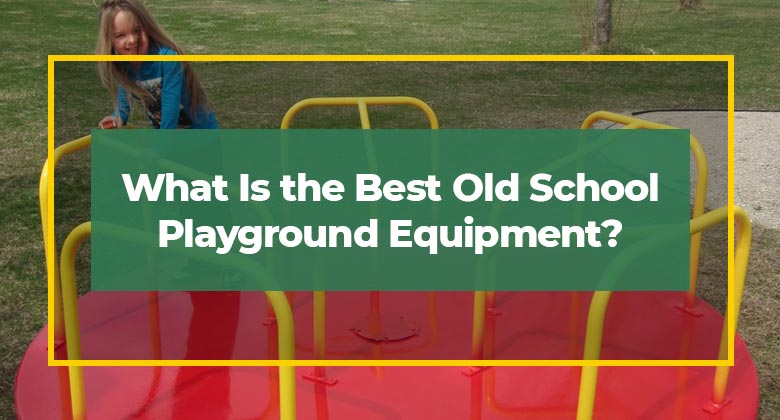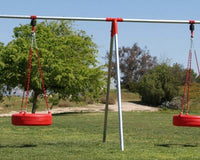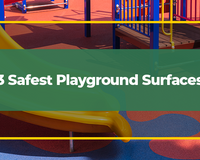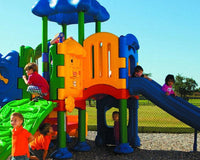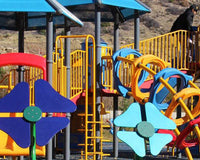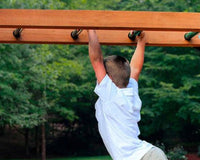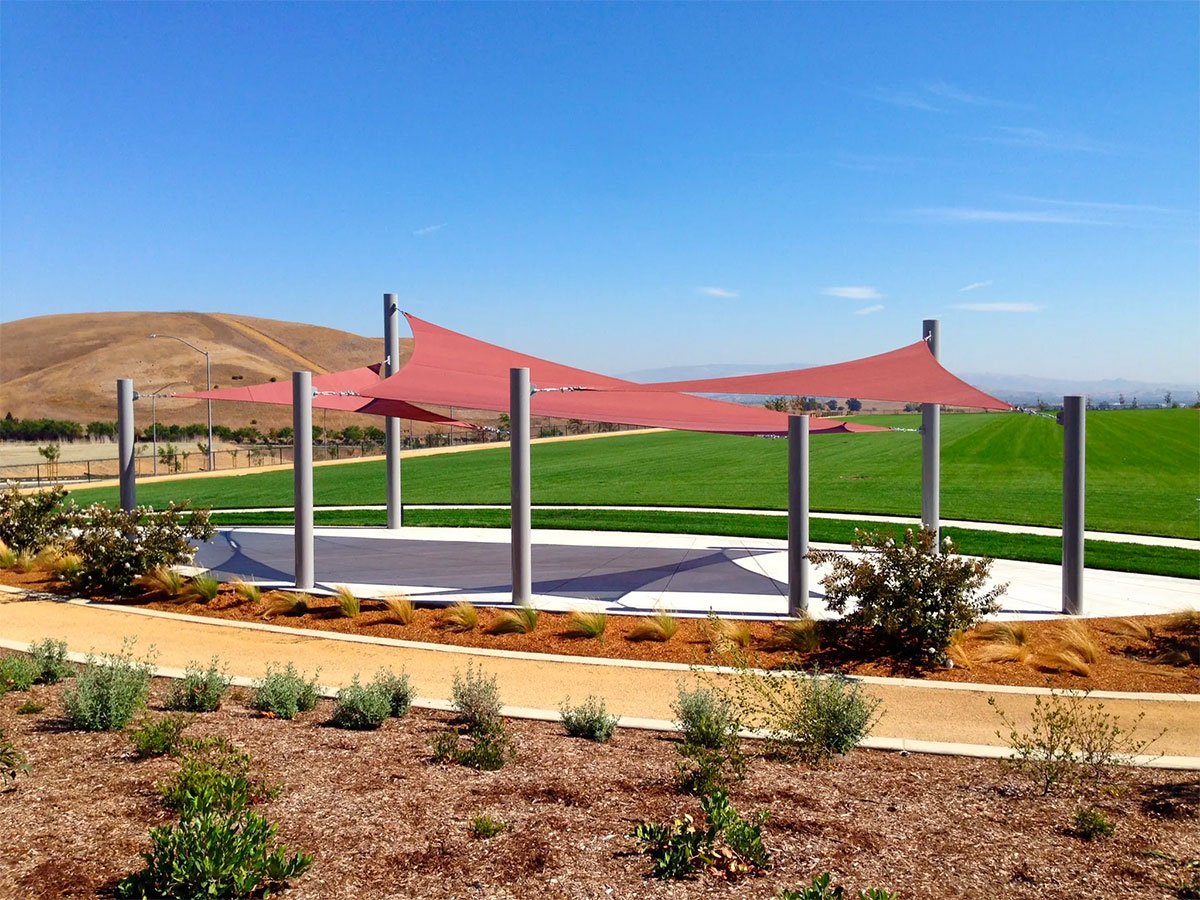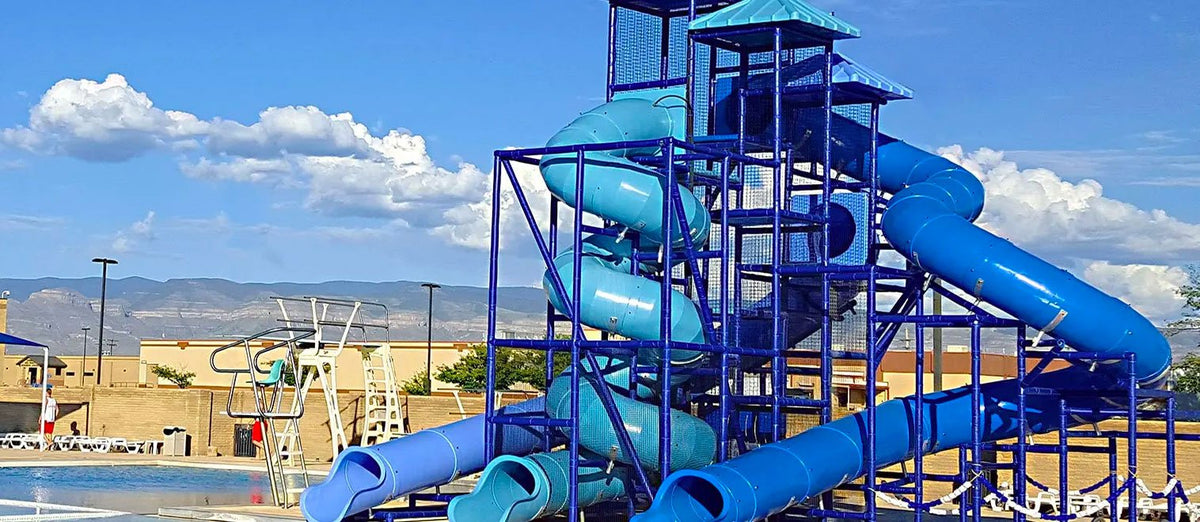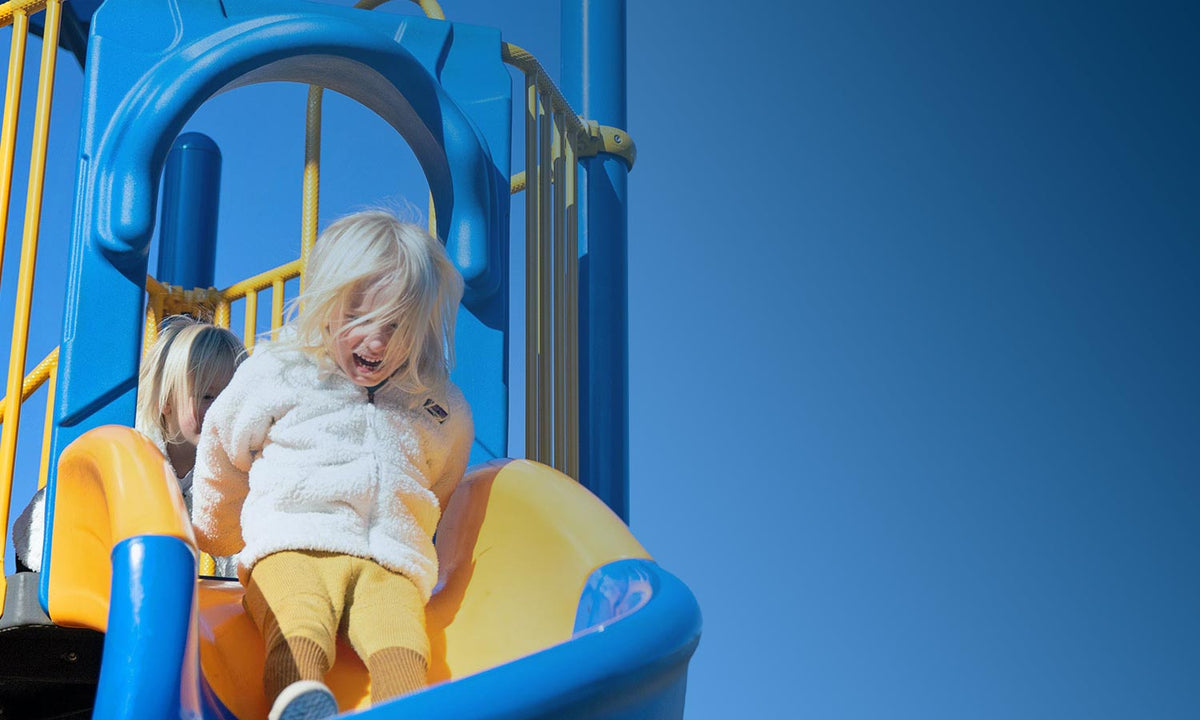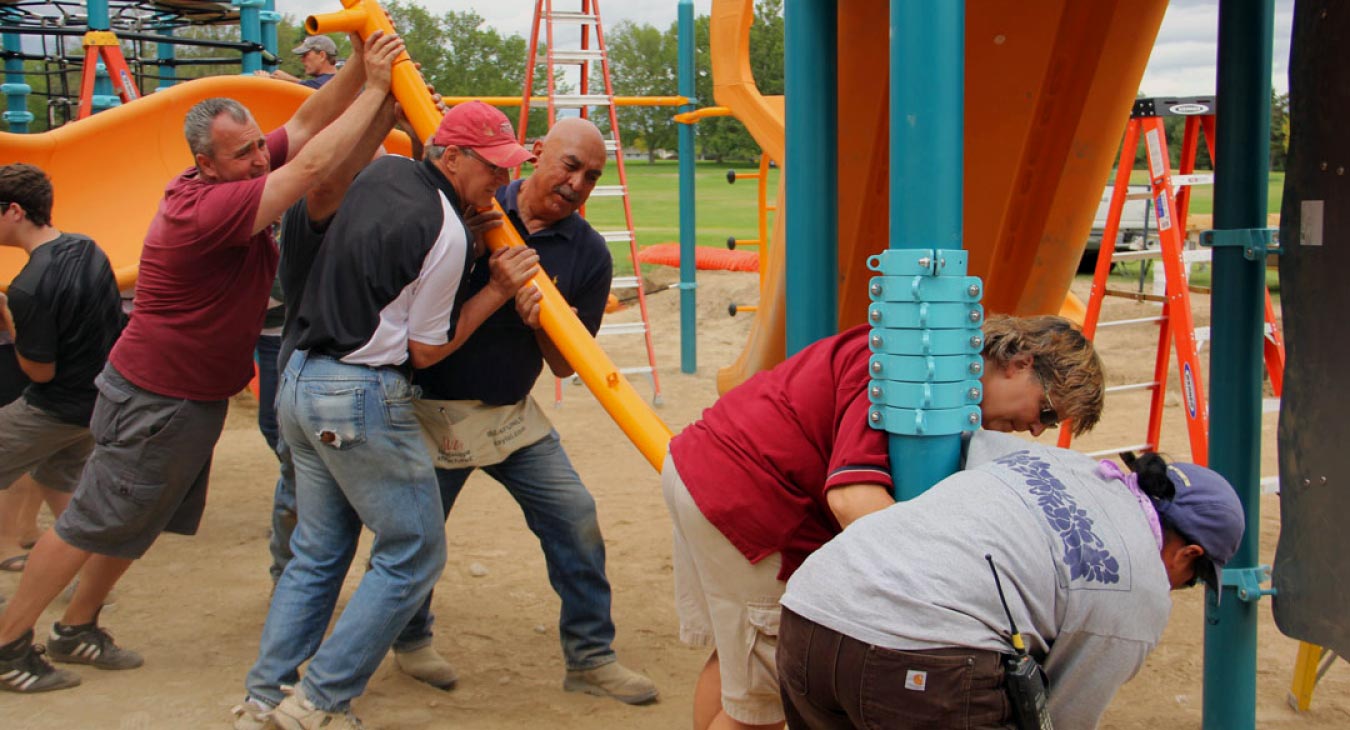What Is the Best Old School Playground Equipment?
If you’ve visited a public playground in the last 20 years or so, you may have picked up on a startling and inexplicable trend—much of the equipment you recall so fondly from your childhood has begun to vanish.
In its place have sprung up massive modulistic structures composed of multicolored plastic and paint-smoothed aluminum and bedecked with peek-a-boo tunnels, miniature climbing walls, and other unfamiliar elements.
These sorts of updates are no doubt appealing to energetic tykes with no other frame of reference. Still, it’s hard for the rest of us not to feel like something vital is missing.
What happened to the kid-friendly death traps of yesteryear?
In this article, we’ll be paying tribute to 10-plus pieces of vintage playground equipment that are becoming increasingly rare but have nonetheless supplied countless generations of youngsters with hours upon hours of excitement.
Playgrounds Then vs. Now
Let’s be honest—it’s more than a little mind-boggling that those of us lamenting the loss of these beloved recreational staples were ever allowed to run, climb, crawl, swing, and slide on them in the first place.
The playground apparatus of the past clearly emphasized fun over safety, a fact made evident by both the scrappiness of their construction and the kind of injury statistics they produced during their tenure. Today’s amusements are far tamer, and not by coincidence, either.
In 1981, the government-operated Consumer Product Safety Commission (CPSC) put out the country’s first formal set of playground safety standards. This ambitious initiative sought broadly to improve the general condition of public play equipment and its surrounding grounds. It would be followed not long after by another, more comprehensive overhaul, ASTM F1487, in 1993.
The specifications laid out in F1487 (the basic outlines of which are still in use today) were geared toward reducing incidents of life-threatening and debilitating injuries on playgrounds. They contain a lot of legalese and technical-sounding jargon, but their principal effect was to make playground equipment softer, shorter, and altogether less treacherous.
That brings us to the present.
We have these historic bits of legislation to thank for minimizing the inherent danger of public play areas, which is, of course, a noble achievement. But we also have them to blame for sending some of our favorite fixtures to the scrapyard.
We’ll get over it eventually. In the meantime, permit us to indulge in a little misty-eyed reminiscence.
12 Memorable Pieces of Old School Playground Equipment
Without further ado, here are a dozen pieces of vintage playground equipment that are conspicuously absent from most modern playgrounds, for better or for worse. Pour out a few sips from your juice box in honor of these decommissioned delights and join us as we limp down memory lane.
1. Jungle Gyms
It just wouldn’t be right to kick off a list of vintage play equipment with anything other than the jungle gym, the spiritual center of every playground and arguably the single most iconic contraption ever to pose a threat to the wellbeing of children under 12.
While one might still stumble upon an old-fashioned labyrinthine steel jungle gym here or there, the overwhelming majority have been replaced by newfangled climbers that are closer to the ground and present less risk of entanglement. A shame, on some level, but no doubt a necessary evolution.
2. Seesaws
The O.G. seesaw (better known to some as the “teeter-totter”) is just as notable for its ingeniously simple design.
You go up, you go down. You look another rider in the eye and work together – elegantly simple and deeply social at the same time!
3. Monkey Bars
Once upon a time, it was a pretty big deal to be able to say that you could Tarzan swing your way from one end of the monkey bars to the other (and back, if you were an insufferable show-off).
Part of the reason was that the process of traversing the gulf provided ample opportunity to roll an ankle, so be careful. With that said, it’s a classic and builds upper body strength.
4. Merry-Go-Rounds
You might remember the Merry-Go-Round as that rotating torture device that once flung your classmate around the playground. Or perhaps you yourself were the one to limp away with your pride and appendages damaged. Well, the technology and safety has improved and you may want to check one out for the kids at your park.
5. Metal Slides
Ah, the venerable sheet metal slide, with its creaky ladder steps, rusted handrails, and sad sideways tilt. How glorious its glinting corrugated slope; how punishing its bare-fleshed friction.
Of all the retired riggings featured on this list, this might be the one we miss the most. What could be more of a hoot than searing your skin on sun-baked aluminum or ripping out all of the hairs on the backs of your legs for the sake of a three-second thrill ride?
Worth it.
Okay, we don’t have many metal options, but you’ll want to check out our playground slides here.
6. Animal Swings
These zoomorphic mounts haven’t been common playground fare for quite some time, and for good reason—they’re the very embodiment of mayhem.
At best, animal swings were like child-sized mechanical bulls spoiling for an ugly fall. At worst, they were horse, frog, and duck-shaped battering rams capable of knocking unwary adolescents senseless if they made the mistake of wandering too close to their destructive arc.
Whether spring-loaded or suspended from chains, the only place one of these conveyances ever took anyone is the E.R.
Maybe instead you should check out our animal shaped spring riders.
7. Wooden Play Structures
Welcome to Splinter City – Population: Everybody.
Building play structures out of wood used to seem like a no-brainer. After all, lumber is cheap, sturdy, and offers nearly unlimited customization potential.
Over time, though, exposure to the elements can transform a wooden wonderland into a hellish labyrinth of warped boards, rickety posts, and exposed nails. And it did exactly that, to the point where many school boards and public officials finally decided to do away with them entirely.
With that said, they are still by far the most common route to go for residential swing sets. At WillyGoat we carry for your backyard, even if it isn’t graded for commercial use.
8. Giant Strides
Here’s the basic concept behind the Giant Stride: you and half a dozen of your closest friends hold onto a series of handles dangling from a free-spinning ring, get a running start, and swing around in a tight circle until gravity conspires to bring you to a gradual stop.
What’s the worst that could happen, right?
You don’t have to be a neurologist to see just how easily one of these could lead to a traumatic brain injury, or why they’ve been phased out of so many playgrounds.
9. Tires
Tires used to be something of an all-purpose commodity on playgrounds—they were hung up as makeshift swings, ground into mulch, and used to erect tunnels, springboards, and climbable structures.
Within the last decade or so, there has arisen some concern as to whether the chemicals in older tires could have adverse effects on kiddies who come into contact with them regularly. As such, they’ve seen a more careful adaptation in recreational areas, especially those in urban centers where there tends to be more public outcry about the potential effects of questionable substances.
Instead, many tires are being cleaned up and recycled into rubber mulch. It is quite a sustainable practice.
10. Sandboxes
One of the most-mourned victims of the playground safety revolution is also one of the most quintessential. No, not the tetherball pole. The sandbox.
What did these unoffending slices of beachy paradise do to deserve the banishment that would put them out of the reach of our adoring shovels forever? Only threaten us with severe disease.
Thanks to sand’s natural proclivity to incubate germs and hazardous mold, as well as animals’ natural proclivity to do their business in it, we’ll have to turn to Rugrats reruns if we want to relive our enjoyment of this classic chill spot.
11. Ball Pits
If you were—or had—a child in the 80s or 90s, there was no way you didn’t spend large chunks of your day digging through these rainbow-colored morasses of plastic spheres anytime you got fast food, made a trip to the mall, or attended a large-scale birthday bash. They were a massively popular attraction, and they were everywhere.
Unfortunately, it would later come to light that ball pits are literal breeding grounds for bacteria, including some linked to particularly nasty diseases like meningitis, pneumonia, and sepsis. Needless to say, the craze died down not long after.
12. Concrete
Technically, our last entry is a type of surfacing, not an actual piece of equipment. That said, we feel it warrants special mention, seeing as how what lies beneath the elements themselves is such an integral part of playground safety.
You probably don’t need us to explain why concrete is no longer playground developers’ go-to surfacing material. In short, hard, unyielding concrete and fragile, prepubescent bodies make a bad mix. Far more forgiving are the engineered wood fiber mats, rubber mulch, and artificial turf that are now the norm in outdoor spaces.
Conclusion
They don’t make ‘em like they used to.
As sad as it may be to watch vintage playground equipment fade into obsolescence, there’s still plenty of cause for celebration. In all its varying forms, modern playground equipment remains an outstanding way for kids to get some much-needed exercise and experience the joy of creative movement. And it’s never been safer than it is now.
We call that a win, regardless of what’s been lost.


